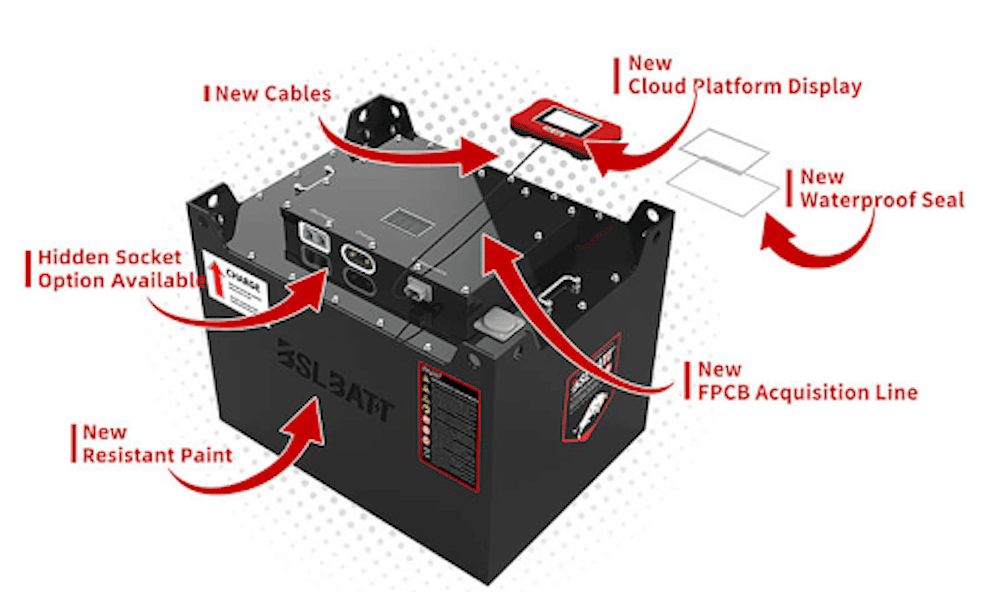Table of Contents
There are many different types of batteries that power our devices and machines. And while they all have one common goal, making a battery last as long as possible, there are still a lot of factors that go into the manufacturing process. In this article, we’ll be taking a look at how one forklift lithium battery manufacturer is able to make their batteries last so long.
What is a Lithium Ion Battery?
Lithium ion batteries are the most commonly used type of battery in smartphones, laptops, and other portable electronics. They offer a number of benefits over other types of batteries, including longer life and greater storage capacity. Lithium ion batteries use lithium ions as their main energy storage element.
To make a lithium ion battery, manufacturers start with a large quantity of lithium metal. They then use a process called “dissolving and casting” to create small pellets from the lithium metal. These pellets are heated until they melt, and then cast into rectangular shapes. Manufacturers then add an electrolyte material to the pellets and seal them together into cells. The cells are put into packages and shipped to customers.
One of the key advantages of lithium ion batteries is their ability to store a large amount of energy in a small space. This makes them perfect for devices that need quick access to power, such as smartphones and tablets. Additionally, lithium ion batteries are resistant to damage due to heat or physical impact. This means that they can be used in devices that are subjected to high levels of stress, such as aircrafts and cars.
Materials and chemistries used to make lithium ion batteries
Lithium ion batteries are one of the most common types of rechargeable batteries on the market. They are made from materials and chemistries that vary depending on the type of battery, but in general they use a lithium ion chemistry to store energy.
Lithium ion batteries use a cathode made of lithium cobalt oxide (LiCoO2), an anode made of carbon, and liquid electrolyte. The cathode is coated with a material called lithium phosphate, which allows it to take up lithium ions from the electrolyte. When you charge a battery, the electrons flow from the anode to the cathode, leaving behind lithium ions. The LiCoO2 cathode can only hold so many lithium ions before it becomes unstable and starts to decompose. This is why li-ion batteries need to be periodically charged using devices like power banks or solar chargers — otherwise, the battery will eventually fail.
There are two main types of li-ion batteries: cylindrical and prismatic. Cylindrical batteries have an elongated shape and prismatic batteries have a triangular shape. Cylindrical batteries are more common than prismatic cells because they’re easier to pack into devices like laptops and phones.

How do they charge these batteries?
Lithium ion batteries are some of the most popular battery types on the market. They offer a high capacity, light weight and durable design. The technology used to make lithium ion batteries is fairly new, so there are still some unanswered questions about how they work.
One common question is how do they charge these batteries? Lithium ion batteries use a charging process called pulse charging. This involves sending an electric current through the battery for a short period of time, usually 10 seconds to two minutes. This Rapid Cycle Charging (RCC) helps to increase the battery’s lifespan by reducing the chance of damage caused by overcharging or undercharging.
Pulse charging also helps to improve the battery’s overall performance. By repeatedly bathing the cells in an electric current, it creates more opportunities for electrons to flow between them and causes the cells to become more active. This increased function results in faster discharge times and longer runtimes between charges.
The Power Cycle Life of a Lithium Ion Battery
Lithium ion batteries are known for their long life, but how do they make them last so long? The answer lies in the battery’s power cycle life.
In a typical power cycle, the battery undergoes three main stages: initialization, operation and discharge. Initialization is when the battery is brought to full charge. This stage can take up to 12 hours depending on the battery size and type. Operation is when the battery is used to power devices like laptops or phones. Discharge is when the battery finally loses its charge and will need to be recharged.
The length of time each stage lasts plays a big role in how long the battery will last. Initialization lasts longest because it requires more energy to bring the battery up to full charge. Operation lasts longest because devices use more power than discharge. Discharge lasts shortest because it uses up the least amount of energy.
Safety and Care Guidelines
When it comes to choosing a lithium ion battery manufacturer, there are a few things you should keep in mind. First and foremost, make sure the company has a good reputation and is known for providing quality products. Additionally, be sure to ask the company how they handle warranty claims and how they ensure customer satisfaction. Finally, be sure to read the safety and care guidelines that the company provides to ensure that your battery is treated with proper respect.


